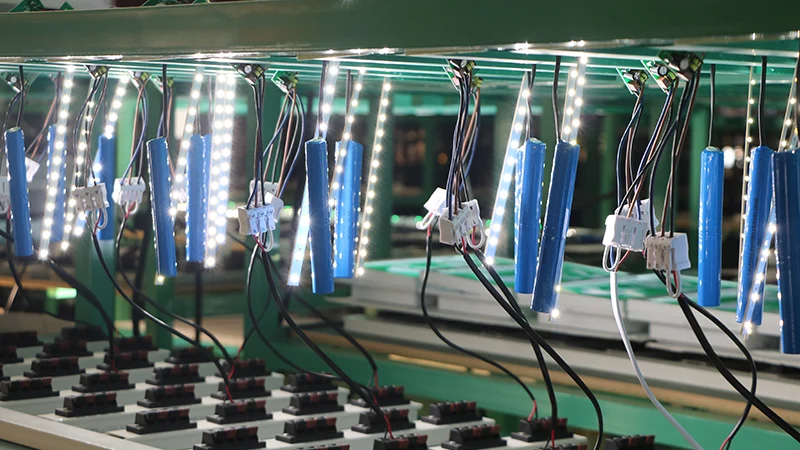Emergency Light Battery Pros and Cons
In today's tech-driven world, batteries power our devices and come in various types, each with distinct pros and cons. At Epowertech, we know selecting the right battery is crucial. This blog explores four common battery types, highlighting their strengths and weaknesses to guide your choice.

Nickel-Cadmium (Ni-Cd) Batteries
Advantages:
- Resilience to Overcharge and Overdischarge: Ni-Cd batteries can withstand charging and discharging extremes without significant damage.
- Cost-Effective: They are relatively inexpensive, making them an attractive option for budget-conscious consumers.
Disadvantages:
- Low Energy Density: These batteries have a smaller capacity, resulting in larger and heavier sizes for the same energy output.
- Hazardous Materials: They contain chromium, which is harmful to the environment and human health.
- Short Lifespan: Ni-Cd batteries have a limited number of charge cycles, leading to a shorter overall lifespan.
Nickel Metal Hydride (Ni-MH) Batteries
Advantages:
- Steady Discharge Characteristics: Ni-MH batteries provide a stable power output with minimal heat generation.
- Affordability: Like Ni-Cd, these batteries are also cost-effective.
Disadvantages:
- Bulky and Heavy: Despite improvements over Ni-Cd, Ni-MH batteries still suffer from large size and weight.
- Limited Capacity: They offer less energy storage capacity compared to newer technologies.
- Short Lifespan: Ni-MH batteries also have a limited lifespan due to a finite number of charge cycles.
Lithium Iron Phosphate (LiFePO4) Batteries
Advantages:
- Stability: LiFePO4 batteries are known for their stable performance and safety features.
- High Energy Density: They provide a larger capacity in a smaller, lighter package.
- Non-Toxic: Free from harmful substances, these batteries are more environmentally friendly.
- Built-in Protection: Equipped with protection circuits to prevent overcharging and overdischarging.
Disadvantage:
High Cost: The price of LiFePO4 batteries is higher compared to other types, reflecting their superior performance and safety features.
Ternary Lithium (Li-ion) Batteries
Advantages:
- High Energy Density: Li-ion batteries offer a large capacity in a compact and lightweight design.
- Non-Toxic: Like LiFePO4, they do not contain harmful substances.
- Built-in Protection: Protection circuits are standard, ensuring safe operation.
Disadvantages:
- Instability: Li-ion batteries can be prone to overheating and other safety risks if not properly managed.
- Risk of Failure: There is a small but significant risk of catastrophic failure, which has led to recalls in some consumer electronics.
Emergency Light Battery Pros and Cons
|
No. |
Battery Type |
Advantages |
Disadvantages |
|---|---|---|---|
|
1 |
Nickel-Cadmium Battery |
Resistant to overcharging and over-discharging, Low cost |
Low energy density, Small capacity with large and heavy size, Contains harmful substance: Cadmium, Short lifespan |
|
2 |
Nickel Metal Hydride Battery |
Stable discharge characteristics, Low heat generation, Low cost |
Large and heavy, Small capacity, Short lifespan |
|
3 |
Lithium Iron Phosphate Battery |
Stable performance, High energy density, Large capacity, Small and lightweight, Non-hazardous substances, Built-in protection board to prevent overcharging and over-discharging, Currently the most stable battery on the market |
High cost |
|
4 |
Ternary Lithium Battery |
High energy density, Large capacity, Small and lightweight, Non-hazardous substances, Built-in protection board to prevent overcharging and over-discharging |
Unstable performance, Certain risks involved |
Conclusion
Choosing the right battery is essential. Ni-Cd and Ni-MH batteries are affordable but have environmental and performance drawbacks. LiFePO4 and Li-ion offer better performance and safety at a higher cost. At Epowertech, we prefer LiFePO4 batteries and provide expert guidance to ensure the best battery solution for your needs. For more information or to discuss your battery requirements, contact us today.